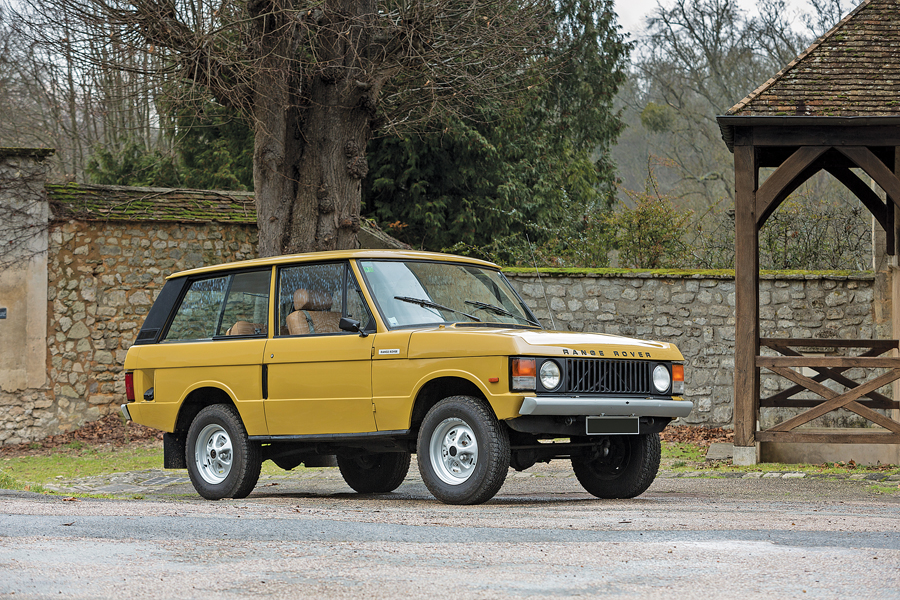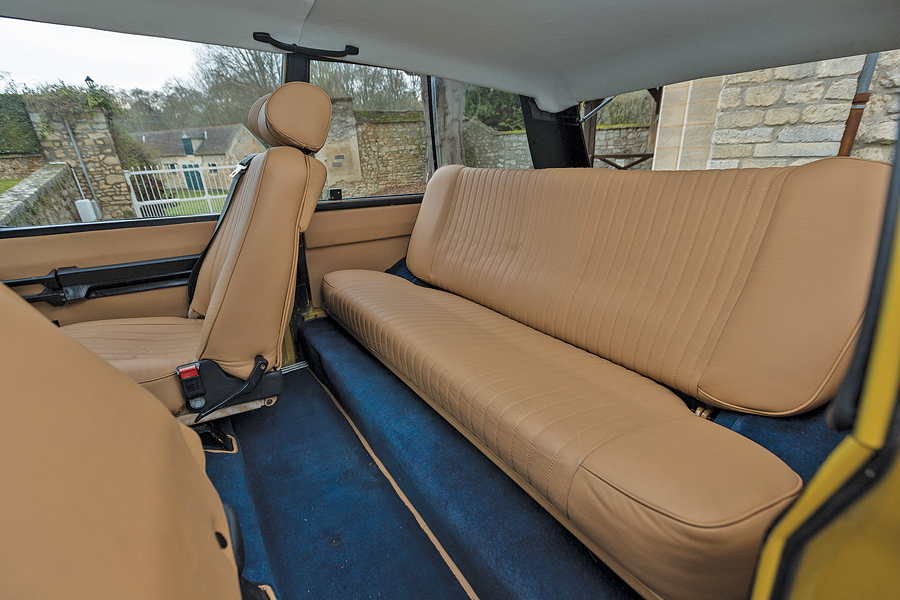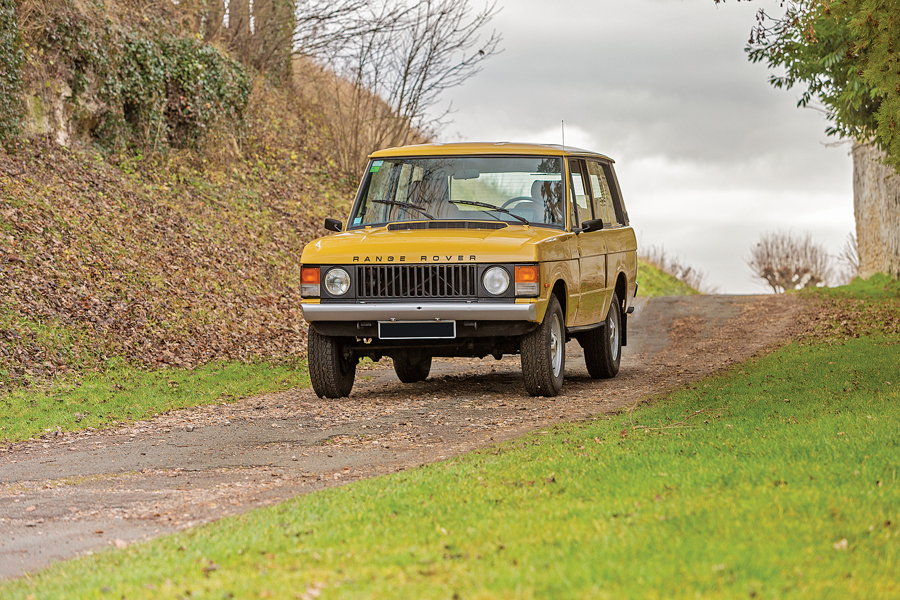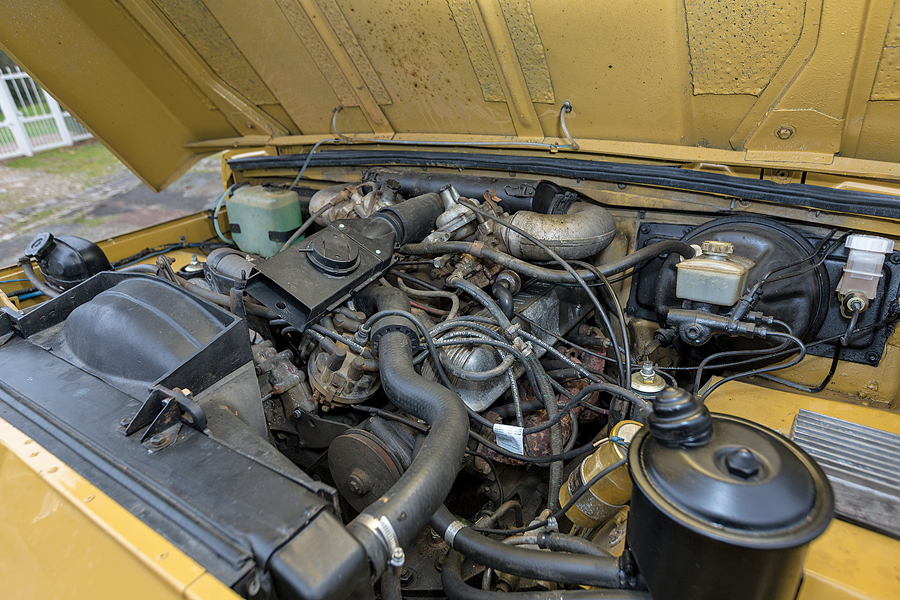This is supposed to be the “Affordable Classic” strand, but Range Rovers aren’t very affordable — in their home country, at least.
They’ve always been expensive to buy and run, but interest in the early cars, especially those with Suffix A (pre-1972) chassis numbers, has been rising steadily over the past decade, perhaps stoked by its sister-under-the-skin Defender’s mortality.
That has pushed prices in Europe to £50k ($60k) plus, even £75k ($95k) in exceptional cases, and Land Rover Heritage’s recently announced Range Rover Reborn program, which asks £135k ($170k) for a factory-restored car, is likely to inflate prices even further.
Interestingly, Land Rover Heritage’s first production wasn’t even a very early car — but a 1978 3-door. Perhaps this is a bellwether of future trends.
The first of its kind
Jeep Wagoneer and Ford Bronco owners will dispute this, but the Range Rover, in Europe at least, is widely held to have created a whole new genre — though let’s not use the dreaded “SUV” label, at least for the early cars, as there’s nothing remotely sporty about them.
The Range Rover’s striking and perfectly balanced design was enough to earn it a place as an exemplary work of industrial design in Paris’ Musée du Louvre in April and May 1971.
The concept of a working vehicle that at the end of the day could be hosed out and smartened enough to take its owner to dinner in comfort was certainly novel. Inevitably, the forces of marketing conspired to promote style over utility, resulting in the derogatory tag “Chelsea tractor,” but all Rangies remain accomplished off-roaders, with permanent four-wheel drive from the get-go.
However, that four-wheel drive can be a Range Rover’s downfall.
Although a Rangie is in its element wallowing up to its bumpers through slime and mud, that kind of driving takes a toll. The body is aluminum, but the structural elements are steel.
Sills and inner wheelarches rust fiercely, so any car asking top money will have — or should have — been restored. Tailgates are steel and rusted from new, but these aren’t structural, just ugly, and they are one of the parts that’s likely to be retooled for the Reborn project.
Early Range Rovers
The pre-production Velars, between 26 and 40 cars (depending who you ask), were badged to disguise them from a nosy press on road trials in 1969. These cars are now really only for total anoraks… ahem, the most serious collectors.
The Suffix A cars are the most sought after and valuable, along with the limited-edition CSK, with the fully loaded Vogue coming in third.
Soft-dash cars from 1994 onward are highly sought too.
It’s all about originality on the earliest cars, which have unique features such as small-hole wheels, embossed-instead-of-printed badges, Wingard mirrors and different detailing and sealing around the C-pillars, which were bare of vinyl covers until 1973.
All should have unpainted rivets in the door shuts, as the panels were painted off the cars.
In the Suffix A, the holy grail is perfect Palomino vinyl seat covers and rubber floor mats. Trouble is, the vinyl doesn’t last well, and finding intact original seats is rare — much less finding New Old Stock.
In January, I drove a 1971 car sporting exactly that, a NOS pair of seat bases. They cost £3,500 ($4,304) — and were protected by £600 ($737) worth of sheepskin covers.
Look a little later and they get cheaper. They also get nicer to drive.
Later Range Rovers
Although they are all coil-sprung — something the Land Rover didn’t receive until 1983 — early cars are almost Landie-crude to operate. They come with a long-throw gear change akin to switching railroad points, yards of transmission slop and acres of body roll — heaving in corners like a barge in a storm.
They didn’t get power steering until 1972, and had to wait until 1982 for an automatic transmission, a year before the 5-speed finally (!) superseded the 4-speed. Factory 4-doors arrived in 1981, with a longer (108-inch, up from 100-inch) wheelbase offered from 1992.
The first cars used the low-compression version of the Rover, née Buick aluminum V8, which knocked out a lowly 130 hp. That improved later, with 3.9 (from 1990) and 4.2 (from 1992) versions, making 182 and 200 hp.
From 1988, a 2.4 turbo diesel was offered, sourced from VM in Italy. This engine is best avoided, as asking it to accelerate is like watching paint dry. Luckily, they weren’t imported to the United States.
From 1992, Range Rover used its own 111-hp 200- and 300TDi engines, which were better.
One interesting re-engine option is the Nissan FD35 (from the Cabstar), which makes similar power and torque to the original petrol V8 — and brings with it Nissan’s slicker-shifting 5-speed transmission.
The small-block Chevy (of course!) drops right in too.
More speed and comfort in later models
Unless you absolutely must have either the first edition or a CSK (or even one of the pre-production Velar-badged cars, a very specialist item), probably the best to own are from the mid-1980s onwards, which have a decent level of comfort and a bit more prod than the originals.
Range Rovers weren’t officially imported to the U.S. until March 1987, so anything earlier than that is gray market.
All U.S. imports, therefore, will be 4-doors, with fuel-injected V8s, 4-speed autos and originally with front spoilers. Pre-1989 cars have exposed front-door hinges.
Production ended in 1996, overlapping its P38A replacement by two years, during which the original Range Rover was rebranded “Classic.” See www.rangerovers.net for a detailed breakdown of U.S.-model specifications, and www.range-rover-classic.com. In Britain, the 300TDi soft-dash is considered the best spec.
Recent sales
Bonhams sold a left-handed, Spanish-domiciled 1978 3-door in Paris in Rétromobile week for just $27k — but the reason it was cheap(ish) is that it wasn’t that sharp, with various accessories such as spare-wheel cover missing and the seats wrongly retrimmed in leather. As on so many early cars, the instrument binnacle was cracked at the top corners — it’s rare to find one intact.
Later in February, Silverstone Auctions sold a 1991 CSK — a 200-off limited-edition 3-door named for its creator Charles Spencer King, this one with a rare manual transmission — for £45,500 ($57k), which was nearer the mark, even though it had been a recipient of a £115k ($145k) restoration.
In the U.K., £15k–£20k ($19k–$25k) gets you a solid driver, with soft-dash cars (from 1994) from $25k, or $40k-plus on an older restoration. Freshly restored cars are anything from £40k to £60k ($50k–$75k) — still half the price of a “new” one from Land Rover Heritage.
In the U.S., it appears that prices have yet to catch up. U.K. specialist Kingsley Cars has sourced a couple of solid project donors there, paying around $10k each.
So while the U.K. and the rest of Europe have woken up to the unique style of the original luxury off-roader, it still looks like a buyer’s market in North America — even with the currently depressed pound.♦



